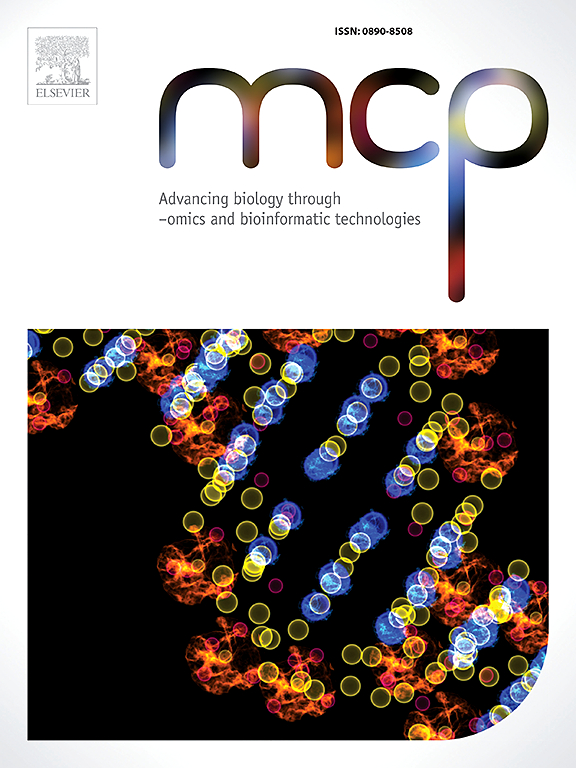无先兆子痫的小胎龄和胎儿生长受限胎儿的早期妊娠预测模型。
摘要
我们建立了无子痫前期(PE)的小胎龄(SGA)和胎儿生长受限(FGR)的有效早期妊娠预测模型,无论发病的胎龄如何[早期FGR发生在32孕周之前或晚期FGR发生在32孕周之后]。回顾性研究于2012年11月至2020年3月期间对单胎高加索妊娠(n = 6440)进行。最后,6440名孕妇中有4469名在捷克共和国布拉格妇幼保健研究所分娩后有完整的医疗记录。该研究包括所有诊断为无PE的SGA (n = 37)或FGR (n = 82)病例,以及80例选择的正常妊娠。四种microrna (miR-1-3p, miR-20a-5p, miR-146a-5p和miR-181a-5p)识别75.68 % SGA病例,假阳性率(FPR)为10.0%。8种microrna (miR-1-3p, miR-20a-5p, miR-20b-5p, miR-126-3p, miR-130b-3p, miR-146a-5p, miR-181a-5p和miR-499a-5p)在10.0% FPR下鉴定出83.80 % SGA病例。基于microrna的SGA预测模型通过实施产妇临床特征(产妇年龄和BMI,通过辅助生殖技术(ART)治疗不孕症,妊娠早期PE和/或FGR筛查以及自发性早产,均采用FMF算法)进一步完善。在使用4种microRNA和8种microRNA生物标志物的情况下,FPR为10.0 %,分别鉴定出81.08 %和89.19 %的妊娠发生SGA。与仅基于4或8种microrna生物标志物表达谱的SGA预测模型相比,基于有限数量的产妇临床特征(产妇年龄和BMI、ART治疗不孕症和4种microrna)的SGA简化预测模型并没有提高SGA的检出率(10.0% FPR时70.27 % SGA病例)。仅7种microrna (miR-16-5p, miR-20a-5p, miR-145-5p, miR-146a-5p, miR-181a-5p, miR-342-3p和miR-574-3p)识别出42.68 % FGR病例,FPR为10.0% (AUC 0.725)。然而,仅将10种microrna (miR-16-5p、miR-20a-5p、miR-100-5p、miR-143-3p、miR-145-5p、miR-146a-5p、miR-181a-5p、miR-195-5p、miR-342-3p和miR-574-3p)结合使用,识别能力更高(AUC为0.774)。在10.0% FPR中发现40.24 % FGR病例。基于microrna的任何FGR亚型的预测模型通过产妇临床特征(产妇年龄和BMI、ART治疗不孕症、胎次(无胎次)、妊娠前SGA或FGR的发生、任何自身免疫性疾病的发生以及慢性高血压的存在)的实施得到进一步完善。在使用7种或10种microRNA生物标志物的情况下,64.63 %和65.85 %的妊娠结局为FGR, FPR为10.0 %。当在FMF算法中加入其他临床变量(如妊娠早期PE和/或FGR筛查以及自发性早产)到FGR预测模型时,在FPR为10.0 %时,检出率甚至增加到74.39 %病例和78.05 %病例。We established efficient first trimester prediction models for small-for-gestational age (SGA) and fetal growth restriction (FGR) without the presence of preeclampsia (PE) regardless of the gestational age of the onset of the disease [early FGR occurring before 32 gestational week or late FGR occurring after 32 gestational week]. The retrospective study was performed on singleton Caucasian pregnancies (n = 6440) during the period 11/2012–3/2020. Finally, 4469 out of 6440 pregnancies had complete medical records since they delivered in the Institute for the Care of Mother and Child, Prague, Czech Republic. The study included all cases diagnosed with SGA (n = 37) or FGR (n = 82) without PE, and 80 selected normal pregnancies. Four microRNAs (miR-1-3p, miR-20a-5p, miR-146a-5p, and miR-181a-5p) identified 75.68 % SGA cases at 10.0 % false positive rate (FPR). Eight microRNAs (miR-1-3p, miR-20a-5p, miR-20b-5p, miR-126-3p, miR-130b-3p, miR-146a-5p, miR-181a-5p, and miR-499a-5p) identified 83.80 % SGA cases at 10.0 % FPR. The prediction model for SGA based on microRNAs was further improved via implementation of maternal clinical characteristics [maternal age and BMI, an infertility treatment by assisted reproductive technology (ART), first trimester screening for PE and/or FGR and for spontaneous preterm, both by FMF algorithm]. Then 81.08 % and 89.19 % pregnancies developing SGA were identified at 10.0 % FPR in case of utilization of 4 microRNA and 8 microRNA biomarkers. Simplified prediction model for SGA based on limited number of maternal clinical characteristics (maternal age and BMI, an infertility treatment by ART, and 4 microRNAs) does not improve the detection rate of SGA (70.27 % SGA cases at 10.0 % FPR) when compared with prediction model for SGA based just on the expression profile of 4 or 8 microRNAs biomarkers. Seven microRNAs only (miR-16-5p, miR-20a-5p, miR-145-5p, miR-146a-5p, miR-181a-5p, miR-342-3p, and miR-574-3p) identified 42.68 % FGR cases at 10.0 % FPR (AUC 0.725). However, the combination of 10 microRNAs only (miR-16-5p, miR-20a-5p, miR-100-5p, miR-143-3p, miR-145-5p, miR-146a-5p, miR-181a-5p, miR-195-5p, miR-342-3p, and miR-574-3p) reached a higher discrimination power (AUC 0.774). It identified 40.24 % FGR cases at 10.0 % FPR. The prediction model for any subtype of FGR based on microRNAs was further improved via implementation of maternal clinical characteristics [maternal age and BMI, an infertility treatment by ART, the parity (nulliparity), the occurrence of SGA or FGR in previous gestation, and the occurrence of any autoimmune disorder, and the presence of chronic hypertension]. Then 64.63 % and 65.85 % pregnancies destinated to develop FGR were identified at 10.0 % FPR in case of utilization of 7 microRNA biomarkers or 10 microRNA biomarkers. When other clinical variables next to those ones mentioned above such as first trimester screening for PE and/or FGR and for spontaneous preterm, both by FMF algorithm, were added to the prediction model for FGR, the detection power was even increased to 74.39 % cases and 78.05 % cases at 10.0 % FPR.

 求助内容:
求助内容: 应助结果提醒方式:
应助结果提醒方式:


